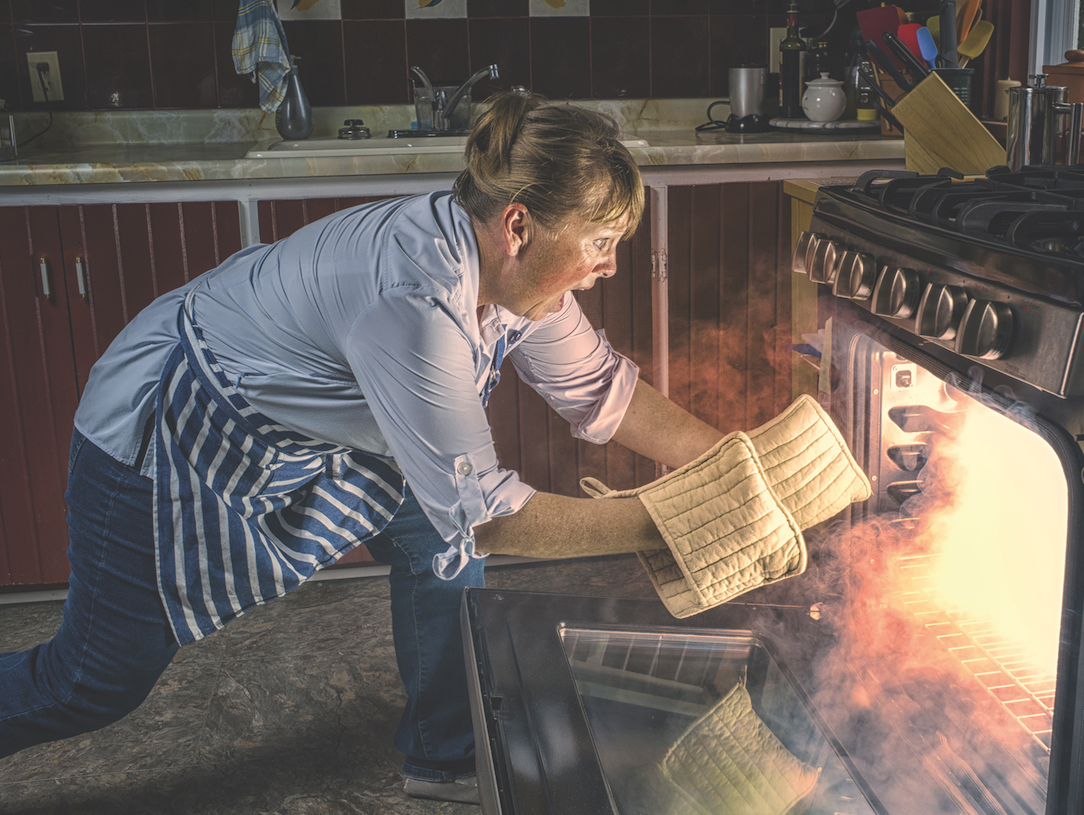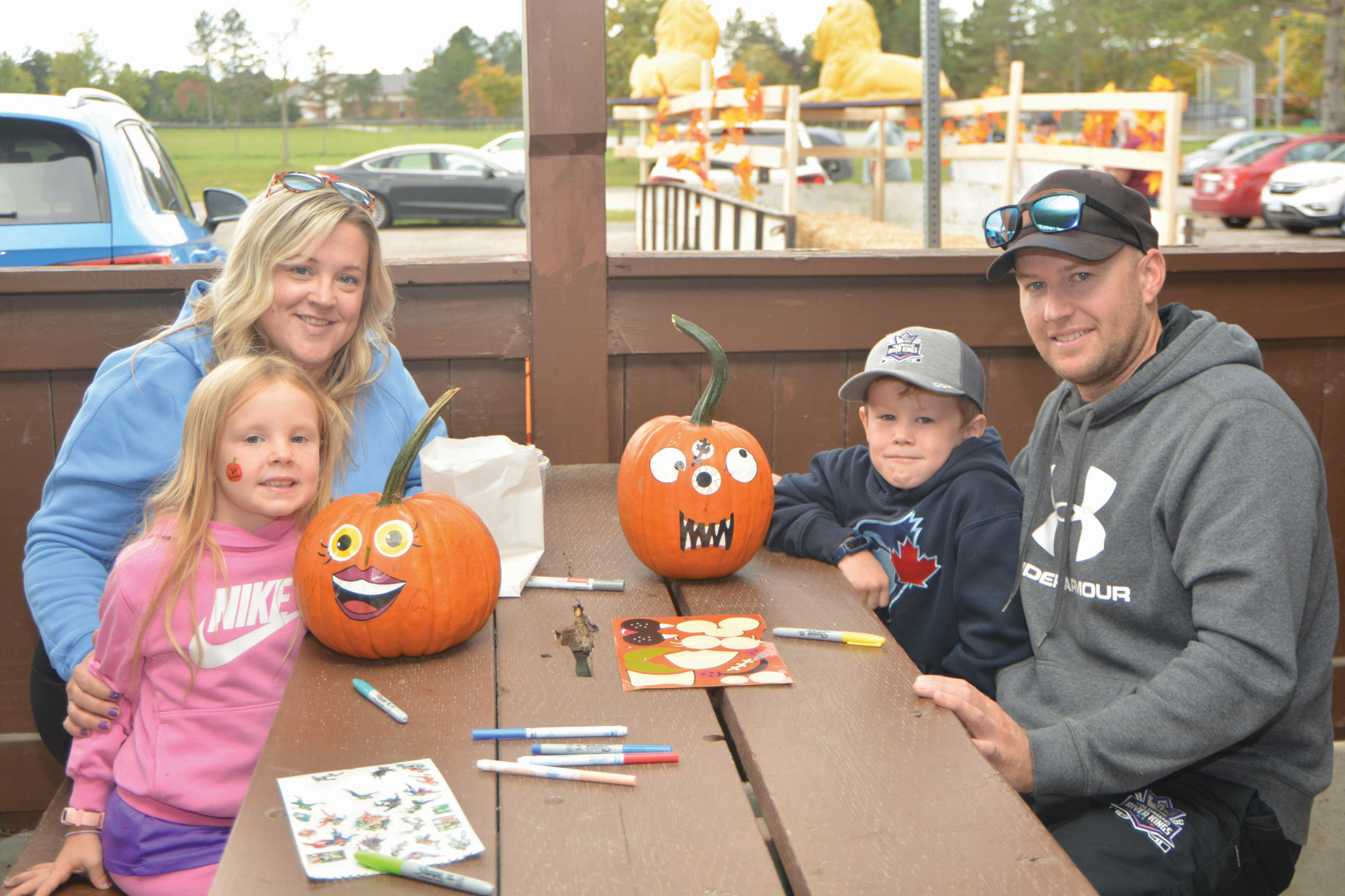Raise your hand if you’ve ever had a cooking related mishap in the kitchen. We’ve all had a close call or made a small mistake some time – maybe a bit of grease jumped from a pan or a bit of hot water splashed on our hands while draining pasta – but for some, those little mistakes can have serious consequences.

This year’s Fire Prevention Week theme is Cooking Safety. When you look at the statistics, it’s clear that many Canadians need to brush up on their kitchen safety knowledge.
According to Statistics Canada, 32% of all residential fires and 43% of fire-related injuries across the country each year are the result of cooking-related incidents. The most recent StatsCan update in 2021 shows 10,819 residential fires took place that year. At a rate of 32%, that’s 3,462 homes damaged or lost countrywide because of a mistake when cooking.
We reached out to Haldimand County’s Fire Department for some information to help Haldimand residents avoid the kind of incidents that could lead to destructive, and potentially fatal, fires.
What are some essential cooking safety tips that residents should keep in mind to prevent fires and accidents?
1. Watch what you heat. Always keep a close eye on what you are cooking, and never leave anything on the stove unattended. Set a timer to remind you that you are cooking.
2. Turn pot handles toward the back of the stove. Always keep a lid nearby when cooking. If a small grease fire starts, slide the lid over the pan and turn off the burner.
3. Have a “kid- and pet-free zone” of at least 1 metre around the stove or grill and anywhere else hot food or drink is prepared or carried.
Can you highlight common cooking practices that may lead to dangerous situations, and what precautions individuals can take to avoid them?
When it comes to cooking with oil, shortening, or other fats, it’s crucial to be extra vigilant. One small mistake, such as overheating the oil or leaving a pot unattended, can quickly escalate into a dangerous kitchen fire.
To prevent these kinds of fires, it’s important to keep pots and pans securely lidded to avoid splashing oil and never to leave cooking equipment unattended.
If you are sleepy or have consumed alcohol, don’t use the stove or stovetop.
Homeowners should be mindful of how they store their kitchen tools and utensils. Make sure that flammable materials, such as paper towels or dish towels, are stored away from the stovetop, and that utensils and tools are kept in a safe and secure location.
What are the key fire prevention measures people should follow when using stovetops and ovens in their homes?
Always stay in the kitchen when frying on the stovetop.
Keep an eye on what you fry. If you see wisps of smoke or the oil smells, immediately turn off the burner and/or carefully remove the pan from the burner. Smoke is a danger sign that the oil is too hot.
Heat the oil slowly to the temperature you need for frying or sautéing.
Add food gently to the pot or pan so the oil does not splatter.
Always cook with a lid beside your pan. If you have a fire, slide the lid over the pan and turn off the burner. Do not remove the cover because the fire could start again. Let the pan cool for a long time. Never throw water on the fire.
If the fire does not go out or you don’t feel comfortable sliding a lid over the pan, get everyone out of your home. Call the fire department from outside.
What are the most common causes of kitchen fires in our area and how can residents reduce the risk?
Two-thirds of home cooking fires start with the ignition of food or other cooking materials.
Clothing is the item first ignited in less than 1% of these fires, but clothing ignitions caused 8% of the home cooking fire deaths.
Ranges or cooktops account for three-fifths of home cooking fire incidents.
Unattended equipment is a factor in one-third of reported home cooking fires and over half of the associated deaths.
Frying dominates the cooking fire problem.
Are there any specific guidelines or safety equipment recommendations for individuals who may have limited mobility or special needs in the kitchen?
The Fire Department encourages anyone with special needs or challenges with mobility to contact headquarters; fire prevention staff can assist with recommendations or questions regarding fire and life safety within their residence.
Can you share information on the importance of smoke detectors and fire extinguishers in the kitchen and how often they should be checked and maintained?
Last year, Ontario lost 133 people to deadly fires – the highest number in over 20 years. Many of these fires were found to have no working smoke alarm and stand as a reminder that only working smoke alarms will alert you to a fire and give you and your loved ones enough time to safely escape. Had there been working smoke alarms, and a well-thought-out and practiced home fire escape plan, these deaths may have been prevented.
Smoke alarms have been legally required to be installed on every storey of a residence in Ontario since 2006. They should be tested annually by homeowners (at minimum).
Residences also include vacation homes, cabins, trailers, RVs, and cottages.
Landlords must test alarms annually, after the battery is replaced, and after every change in tenancy. Renters must notify their landlord as soon as they become aware that a smoke alarm is not operating.
What resources or educational programs does the County Fire and Paramedic program offer to help residents learn more about cooking safety and emergency preparedness in the kitchen?
Haldimand County Fire Department offers a number of fire safety and education resources for individuals and families on their website at haldimandcounty.ca/fire-services/fire-safety-education. The department also participates in community, school, and home visits to provide public education.
We can all work to be a little safer in the kitchen. While our firefighters are nothing short of heroes, I’m sure they would rather focus their efforts elsewhere than having to put out a preventable fire in your home. Remember, cooking safety starts with you!





